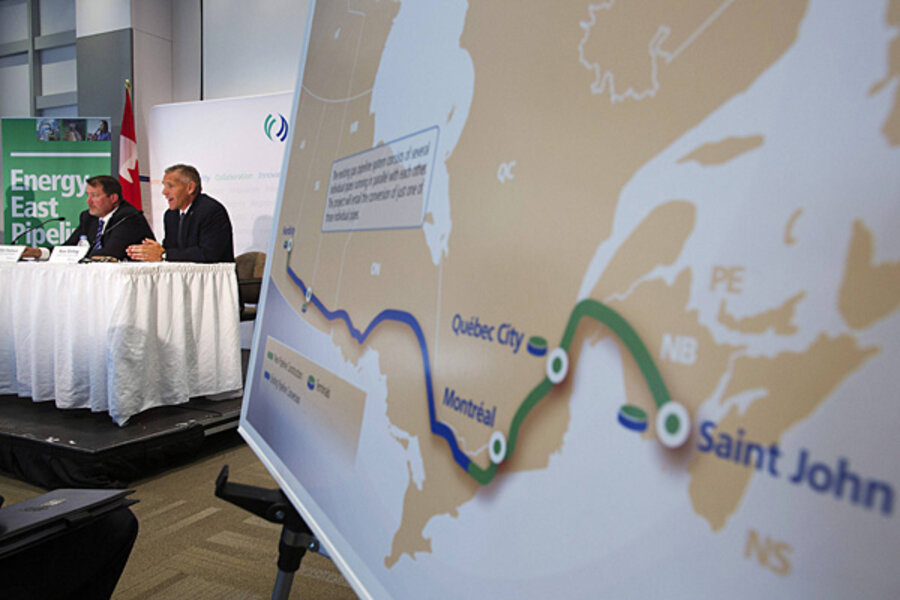Move over Keystone XL. There's a new pipeline in town.
Loading...
TransCanada Corp has released a study commissioned from the consulting and audit firm Deloitte Touche that estimates the benefit to Canada from the company's proposed Energy East Pipeline from Alberta to the Atlantic Coast, just as Canadian Natural Resources Minister Joe Oliver met this week with U.S. Energy Secretary Ernest Moniz to put the ball back in Washington's court over the controversial and long-delayed Keystone XL Pipeline.
The Energy East Pipeline would feed refineries in Quebec and New Brunswick that at present get 86 per cent of their crude supply from the international market at much higher prices than they would pay for crude from Alberta. The Deloitte report estimates that it would boost Canadian gross domestic product by $35 billion over 40 years, of which about one-third would accrue to Ontario, one-quarter to Alberta, and one-fifth to Quebec. Governments across the country would collect over $10 billion from the project over the next four decades.
Construction cost estimates for the pipeline range up to $12 billion. It would carry more than 1.1 million barrels per day (bpd) of crude oil, a figure recently increased from 850,000 bpd in view of anticipated increased demand from refineries in the east of the country. TransCanada still needs approval from Natural Resources Canada and the National Energy Board, but there is strong federal and multi-provincial political momentum in its favor. The project would be expected to be completed by 2017. (Related Article: Canada Plans Strategic Pipeline Infrastructure while US Stalls on Keystone)
At the same time Oliver brought proposals from Ottawa for cooperation with the Washington on common emissions targets for oil-sands extraction, hydraulic fracturing ("fracking"), and other non-conventional sources of oil and gas. He sought to address, he said, "the importance of modern energy infrastructure and re-enforcing its safety, developing unconventional oil and gas resources responsibly, supporting responsible use of energy, and demonstrating joint global leadership on energy and environmental issues."
The Canadian press views this visit as a last-ditch effort to reach agreement on Keystone XL Pipeline by framing the issues more broadly. The Energy East Pipeline is only one of several projects under way to find buyers other than the United States for Canadian energy resources.
Ottawa has drafted new regulations concerning greenhouse gas emissions, but Washington has adopted the stance that they are insufficient to satisfy U.S. environmental groups critical of the project. Canadian proponents of the Keystone XL have grown weary of repeated delays, to the point that they no longer trust Washington to honor any commitments that it may make.
The Canadian government, on the other hand, is also driven by the goal of avoiding disadvantage to its own energy sector companies when it announces its greenhouse gas reduction targets, in line with international commitments, before the end of the year. That is another reason why it wishes to frame them within a joint U.S.-Canadian policy on climate change.
Original Article: http://oilprice.com/Energy/Energy-General/Momentum-Builds-for-New-Canadian-Pipeline-as-Keystone-Continues-to-Stall.html







